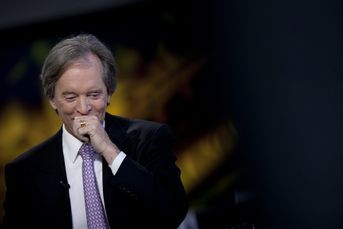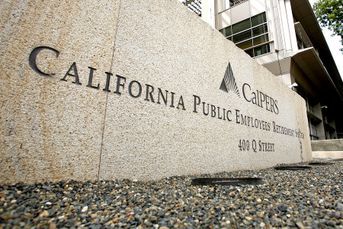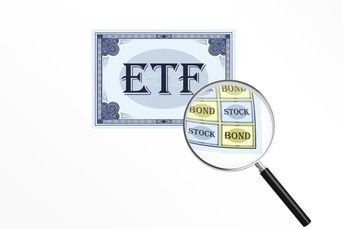Pimco could withstand losing another $350 billion before asset flow starts to pinch
Morningstar report says outflows of $300B to $350B in next few years could hit firm's bonus pool, lead to key departures.
Pimco could withstand an asset drain of up to $350 billion in the next two to three years — about 10 to 15% of its total assets — before its portfolio management operations could be affected, analysts say.
That’s on top of the tens of billions of dollars that Pimco has already lost since Bill Gross, its co-founder and chief investment officer, left in late September.
But even analysts concede they don’t know how much Pimco is losing because most outside monitoring firms only track mutual fund flows, not institutional. And institutional assets under management account for about two-thirds of the $1.47 trillion Pacific Investment Management Co. officials reported under management from non-affiliated companies as of Sept. 30. (That number does not take into account estimates that Pimco had $48 billion in mutual fund outflows in October, mostly from the Total Return Fund Mr. Gross had managed.)
Morningstar Inc. analysts said in a Nov. 10 report that a sustained period of outflows, totaling $300 billion to $350 billion in the next several years, would affect the firm’s bonus pool, which could lead to key personnel departures, or force Pimco to reduce staff.
“Such a move would likely disrupt the firm’s investment process, which could affect investment performance, and so on,” the report said.
The report said Pimco generated profits of $6.5 billion in 2013 for parent Allianz SE, an operating margin of nearly 37%. Pimco ranked fourth in operating profits for publicly traded asset managers that year; T. Rowe Price Group Inc. was first, with 47.58%.
(More: Pimco focuses on talent retention as other firms take assets)
“It’s a good thing they are so profitable,” Philipp Haessler, equity analyst with Equinet AG in Frankfurt, said in an interview. He noted the firm has a cushion to absorb significantly more asset losses before it would have to take drastic measures.
Mr. Haessler also comes up with $300 billion to $350 billion in outflows before Pimco would have to take steps such as reducing staff.
Pimco executives insist the firm has a bright future. One consultant said he attended a meeting in which company officials portrayed staff at the Newport Beach, Calif., firm as, “as one big happy family.”
Pimco officials say they are planning a major expansion of the firm’s ETF platform, adding new products to replicate its mutual funds and targeting other areas of the firm, such as liquid absolute return strategies.
The expansion efforts include adding new ETFs to the $12 billion, 17-fund lineup, including a wider variety of fixed-income offerings and equity strategies, said Wendy Cupps, global head of Pimco’s product management group. This would be the first time Pimco has offered equity ETFs.
Previous efforts by Pimco to build up areas such as active equities have been slow-moving, and non-fixed-income assets still account for less than 20% of the firm’s assets.
But the future success of the company will depend on stemming the outflows that have drastically accelerated since Mr. Gross left.
The Morningstar report, the work of 12 analysts, says Pimco probably won’t face the worst-case scenario because it still benefits from a “large pool of highly talented and highly capable managers and analysts.” The report states, however, that if investment strategies exhibit poor performance or there is an unexpected downturn in the bond market, more investors could pull their money.
(Related: What the Pimco saga can teach advisers)
Mr. Haessler said good performance will be Pimco’s best chance to keep assets. He also believes Pimco has put its top investment personnel in place to replace Mr. Gross and sees as a good sign that several key investment personnel who left in the months before Mr. Gross’ departure have now returned to the firm.
Retaining the bulk of the assets in the Total Return Fund and separate accounts associated with it are crucial. The fund and associated institutional portfolios still have an estimated $300 billion in assets.
FULLER PICTURE EXPECTED
A fuller picture of asset losses at Pimco is expected to surface over the next few months as institutional investors, which often go through longer review processes with consultants and trustees before acting, decide whether to keep or terminate the firm.
But not everyone is waiting.
The board of the San Francisco City and County Employees’ Retirement System voted Nov. 12 to drop the Total Return Fund as an investment option in its $2.67 billion deferred compensation plan. But the vote was perfunctory; Executive Director Jay Huish disclosed staff had liquidated the fund days earlier using emergency powers. Three board members who sit on the system’s deferred compensation committee had recommended the termination of Pimco in October
Mr. Huish said at the meeting that system officials and consultants from Angeles Investment Advisors, San Francisco’s investment consultant, felt it was in “participants’ best interests” to move the $273 million in assets before the Nov. 12 meeting, given the number of other plan sponsors that might be exiting the Total Return Fund.
(More on Pimco: Company paid Bill Gross $290 million bonus in 2013)
Sumit Desai, a Morningstar analyst, said it is clear there is a “rush to the exits” by institutional investors invested in the Total Return Fund or separate accounts based on the strategy.
Neil Rue, Portland, Ore.-based managing director at investment consultant Pension Consulting Alliance Inc., said there is a continuing “mass exit of investors from the Total Return Fund. It’s amazing to see the momentum in that direction.”
Mr. Rue said uncertainty around the total return strategies remains regarding the investment philosophy and approach of the new investment team appointed to replace Mr. Gross.
Pimco’s Ms. Cupps said Mark Kiesel, Scott Mather and Mihir Worah, all long-standing members of Pimco’s investment committee, were involved in the total return strategies before taking over the fund following Mr. Gross’ departure to Janus Capital Group.
One top official of a major investment consulting firm, who asked not be identified, said his firm has recommended clients keep their exposure to the Total Return Fund and related institutional strategies. He said his firm is comfortable with the team chosen to take over the strategy from Mr. Gross.
But the consultant said many of clients, particularly public pension funds, were ignoring his firm’s advice.
Randy Diamond is a reporter at sister publication Pensions & Investments.
Learn more about reprints and licensing for this article.






